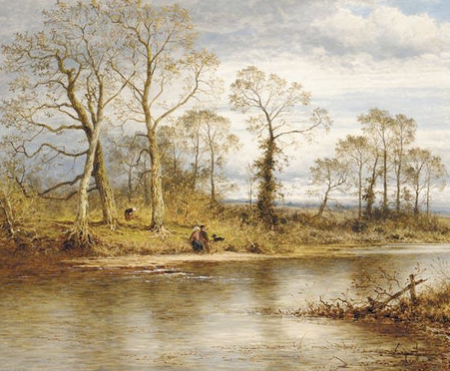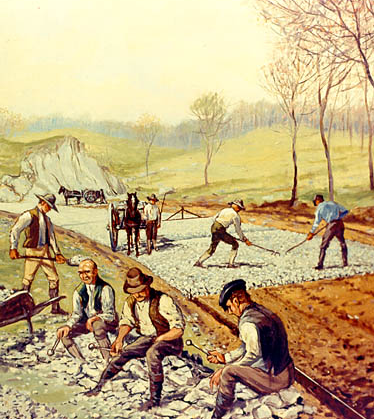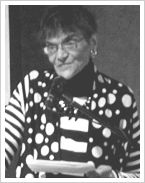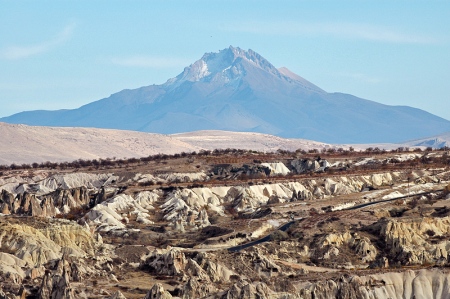Time Magazine has an interesting article by Daniel Okrent about Detroit’s fate. What was once known as America’s Arsenal of Democracy and became the fourth largest city in the United States, shows signs of accelerated decay. Unemployment rate is almost 30%, business is all but (almost) shutdown, and the town of Robocop has nothing but a gloomy future. What is relevant in Okrent’s piece is his discussion on the political economy of Detroit’s failure. Populist politicians, overconfident automobile companies and pampered unionized workers intertwined to make of this Michigan city a urban disaster. Check out the pics of Detroit’s remains by Sean Hemmerle. They’re quite scary.
Sessions of the Second Latin American Economic History Congress
September 21, 2009This week in Economic History (May 25-29th, 2009)
May 25, 2009On Monday the 25th and Tuesday the 26th, a conference on “Ambitions and Reality: Historical Perspectives on the Common Agricultural Policy” will be held in the Deutsches Historisches Institut in Paris. Also on Monday, Stephen Haber (Stanford University) will present a paper on the myth of the resource course in the Economic History Seminar in Mexico City.
On Wednesday the 27th, a workshop on “Les langues du commerce à l’époque moderne” will be held at the Maison Méditerranéenne des Sciences de l’Homme, in Aix-en-Provence, France. You can contact Olivier Raveux if you wish more information on this event. Also on Wednesday, the VonGremp Workshop in Economic and Entrepreneurial History hosts Robert Margo (Boston University). Margo will present his paper Did Railroads Induce or Follow Economic Growth? Urbanization and Population Growth in the American Midwest, 1850-1860.
Blanchard I. (1986) The 16th-century European cattle trade
March 14, 2009Blanchard, Ian (1986) “The Continental European Cattle Trades, 1400-1600”, The Economic History Review, 39/3, 427-460.
Introduction
The European international cattle trade arose in the 1470s out of a “context of a network of regional markets” for locally grazed animals (p.428). Antwerp for instance drew its supplies mostly from Zealand and Holland. The diminutive livestock trade was limited to the Hungarian exports to Venice and some Rhenish towns (Frankfurt, Cologne; p.429). “As gold production recovered in Hungary during the second quarter of the 15th century, […] the economy was subject to the dual pressures of a hard exchange and an excessive money supply which caused its export products to be overpriced on international market and turned a previously strong balance of trade into a decidedly weak one” (p.430). The northern Polish (Breslau, Poznan, Gniezno) products partly replaced the Hungarian cattle after the 1420s, they were exported through the fair of Leipzig. The Hungarian solely retained the south European markets. Read the rest of this entry »
Faroqhi S (1980) Ottoman overland transportation
February 28, 2009Faroqhi, Suraiya (1982) “Camels, Wagons, and the Ottoman State in the Sixteenth and Seventeenth Centuries”, International Journal of Middle East Studies, 14/4, 523-539.
Introduction
Earlier research on the subject of Ottoman transport history have emphasized the role of the state in the system. Less attention has been paid to the “material bases of overland transportation” (p.523). The main point is the competition between camels and wheeled-wagons pulled by oxen. Overland transportation was uniquely important in Anatolia since most urban centers lacked an access to the sea. Even for port towns, the bulk of the international trade transited through land routes (p.524). Read the rest of this entry »
History canal
February 27, 2009American canal building
Waterway triumphs

Feb 26th 2009
From The Economist print edition
AS SOME governments are about to rediscover, the actual construction work can be the easy part when embarking on large infrastructure projects. Winning the necessary political support is much harder, especially from legislators keen on alternative public works that more directly benefit their constituents. The competing interests of places that stand to lose or gain from projects are further obstacles to overcome. So are the difficulties contractors experience when they seek to recruit thousands of dependable employees willing to work long hours in arduous conditions. Read the rest of this entry »
Kessler D. and T. Peter (2007) The grain trade in the Roman Empire
June 1, 2008Kessler David and Temin Peter (2007) “The organization of the grain trade in the early Roman Empire”, Economic History Review, 60/2, 313–332.


Introduction
“Long-distance trade […] was beset by information problems”. Principal-agent issues have been studied for the medieval/early modern period, this article extends the scope to the Roman merchants. Who did they deal with asymmetric information? In particular how did the logistical nightmare that consisted of providing wheat to Rome’s inhabitants was overcome (313)? After the end of organized piracy in 67 BC, there was still a significant amount of uncertainty for the merchants. How did they managed their agents often located months away in distant provinces? Read the rest of this entry »
Grantham G. W. (1997) The impact of pre-industrial cities on agrarian productivity
May 25, 2008Grantham George W. and Sarget Marie-Noëlle (1997) “Espaces privilégiés : productivité agraire et zones d’approvisionnement des villes dans l’Europe préindustrielle” Annales. Histoire, Sciences Sociales, 52/3, 695–725
Introduction
Low agricultural productivity and high transportation costs before the second half of the 19th century induced a low demographic density (695). In 1821, J. H. von Thünen showed that – due to these characteristics – a series of specialised agrarian rings tended to encircle the cities and ordered so as to minimize transportation costs. The most precious productions (milk, vegetable) were located close to the urban centres, while the bulkiest (wood, grain) tended to be rejected further. Read the rest of this entry »
Abelor G. (1973) The great alteration of the French roads in the 18th century
April 20, 2008Arbellot Guy (1973) “La grande mutation des routes de France au XVIIIe siècle”, Annales. Histoire, Sciences Sociales, 28/3. 765-791.


This article is available on line.
Introduction
When Louis XIV died (1715), the roads of the kingdom he was leaving to his successor were in a dreadful state. This was a major bottleneck for the growing economic and administrative activities. The controleur général (finance secretary) Orry and the intendant Trudaine decided to repair the old roads and build new ones where carts and coaches could travel fast. Read the rest of this entry »




 Posted by Manuel A. Bautista-González
Posted by Manuel A. Bautista-González 











